Other
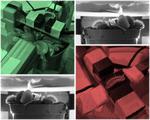
“Physicists use atomic magnetometers to measure the biomagnetic signals of the carnivorous plant The Venus flytrap (Dionaea muscipula) is a carnivorous plant that encloses its prey using modified leaves as a trap. During this process, electrical signals known as action …
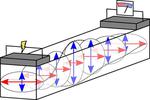
“Physicists use antiferromagnetic rust to carry information over long distances at room temperature Be it with smartphones, laptops, or mainframes: The transmission, processing, and storage of information is currently based on a single class of material – as it was in …
News A milestone in quantum physics: Physicists at Mainz University successfully carry out the controlled transport of stored light
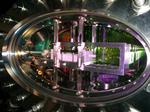
“Patrick Windpassinger and his team demonstrate how light stored in a cloud of ultra-cold atoms can be transported by means of an optical conveyor belt A team of physicists led by Professor Patrick Windpassinger at Johannes Gutenberg University Mainz (JGU …

“International team of scientists with Mainz participation proposes plans for high-intensity gamma radiation source at CERN The ‘Gamma Factory initiative’ – an international team of scientists – is currently exploring a novel research tool: They propose to develop a source of high-intensity …
News Physicists make one step toward using insulating antiferromagnetic materials in future computers

“Physicists at Mainz University and cooperation partners observe reading and writing of digital information with antiferromagnetic materials Future computer technology based on insulating antiferromagnets is progressing. Electrically insulating antiferromagnets such as iron oxide and nickel oxide consist of microscopic magnets …
News Researchers at Mainz University synthesize new liquid crystals that will allow the directed transmission of electricity

“Organic power cable for electronic components Liquid and solid – most people are unaware that there can be states in between. Liquid crystals are representative of one such state. While the molecules in liquids swim around at random, neighboring molecules in …

“New technique enables implantation of individual ions into crystals with an accuracy of 35 nanometers Modern electronics is based on doped semiconductors. To synthesize electronic components, dopant atoms such as aluminum or phosphorus are embedded into crystals of ultrapure silicon …
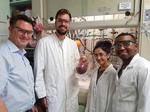
“A waste stream from food production is a valuable alternative for petroleum in the production of organic UV filters Researchers at Johannes Gutenberg University Mainz (JGU) in Germany, in collaboration with colleagues from the University of the Witwatersrand in Johannesburg …
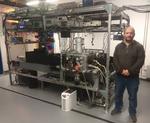
“Measurement of parity violation for different isotopes of atomic ytterbium agrees with predictions of the Standard Model of particle physics A reflection always reproduces objects as a complete mirror image, rather than just its individual parts or individual parts in …

“Physicists explore long-distance information transmission in antiferromagnetic iron oxide Scientists have succeeded in observing the first long-distance transfer of information in a magnetic group of materials known as antiferromagnets. These materials make it possible to achieve computing speeds much faster …

